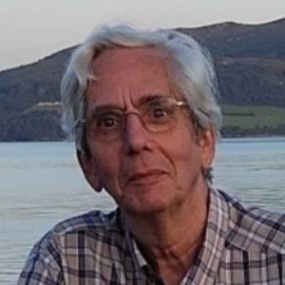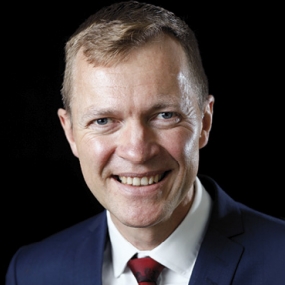Remembering the Omagh bombing - Anaesthesia 2025 podcast
In this podcast, recorded at Anaesthesia 2025, host Dr Helgi Johannsson talks to retired anaesthetist Dr John Maginness.
On 15 August 1998 a bomb was detonated in Omagh town centre, in Northern Ireland. John, who lived locally, was a member of the medical team who responded. John joined the panel discussion on the Omagh bombing at our 2025 Belfast annual conference and in this podcast, recorded in Belfast, John shares his recollections of that day in 1998.
John discusses his and Helgi's shared personal experiences of terror attacks and major incidents, how responses have developed (and what has stayed the same), and John's appreciation for the professionalism and competence of the many allied health professionals who worked in the aftermath of the Omagh bomb.
In the recording, John mentions the Omagh hospital visitors' book, signed by Irish President Mary MacAleese, NI Minister of Health John McFall, and others. He shared a photo of the page, which we've included at the bottom of the page.
Links:
Our Anaesthesia 2026 conference will take place in Brighton and online over three days in May 2026. If you want to hear from leaders in anaesthesia and get the latest insights and professional development book by 31 December to get 20% off. More details: Anaesthesia 2026 | The Royal College of Anaesthetists.

John was born in Belfast, where he completed secondary education at St Malachy’s College. In 1972, he graduated in Medicine from Queen’s University and commenced training in Anaesthetics in hospitals throughout Northern Ireland, with a year at University Hospital Rotterdam.
On completion of higher specialist training in Anaesthesia, John was appointed to the post of Consultant Anaesthetist at Tyrone County Hospital, Omagh in 1980. At this hospital, all staff worked closely together to develop the elective and acute services for the benefit of the people of this rural town and countryside. This resulted in surgical and anaesthetic care of the highest quality, delivered by consultants and colleagues, operating in modern theatre suites with a high dependency/intensive care unit. Patients of all ages requiring resuscitation were cared for with treatment in the hospital or stabilised for road transfer to a Belfast third level unit, accompanied by a consultant anaesthetist and staff nurse.
After three decades of rewarding and fulfilling work in Omagh, John retired in 2010.

During Helgi's ten years as a consultant and six years as clinical director much has changed in the anaesthetic practice and in the NHS. Through coverage in the media anaesthesia is now better understood by the public, and significant credit should go to the College for their engagement with patients, the public, and particularly their support for junior doctors in recent years.
Helgi has had a keen interest in training and remains an educational supervisor despite holding a clinical director role. When interviewing for core training posts he has been constantly impressed by the calibre of candidates being recruited into anaesthesia. He continues to work on reducing the paperwork of training and making it more streamlined, giving the trainee more time to pursue their subspecialty interests without having to prolong their time in training posts. He also believes the FRCA exam needs to become more relevant to modern anaesthesia.
Helgi is a good communicator, proactive, realistic, and fiercely proud of working in the NHS and believes anaesthetists should celebrate it rather than denigrate it, and defend the care given. Helgi thinks anaesthetists should also be open to new ideas, but not allow service to be starved of funds and capacity.
